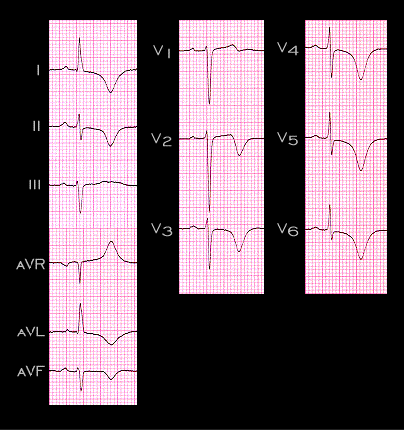
QT prolongation, frequently with T wave inversion, may occur following an intracranial hemorrhage as well as in association with other intracranial lesions associated with an increase in intracranial pressure. This is often referred to as the “CVA pattern”. Similar ECG changes may occur in association with myocardial ischemia and may also be neurogenically mediated. The ECG shown here is from a 68 year old female following an episode of myocardial ischemia secondary to a 95% stenosis of the proximal left anterior descending coronary artery. The QT interval is markedly prolonged (520ms). These ischemia related T wave changes will be discussed in the next chapter.
